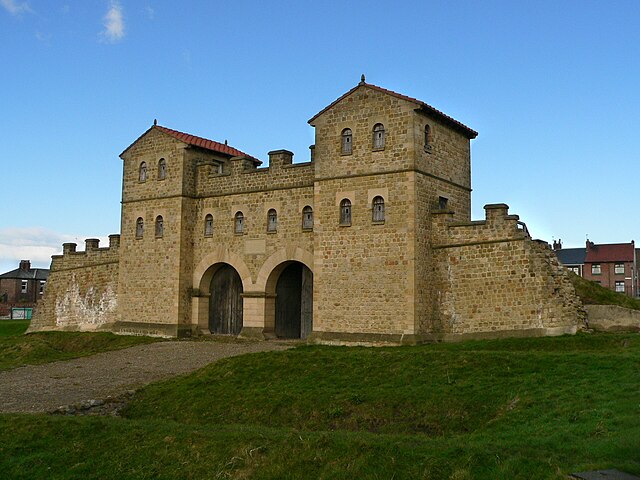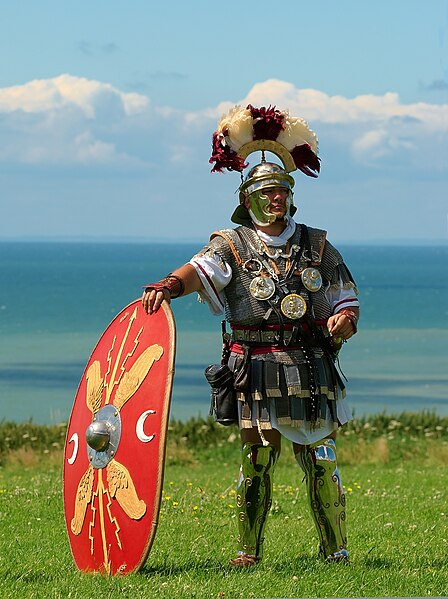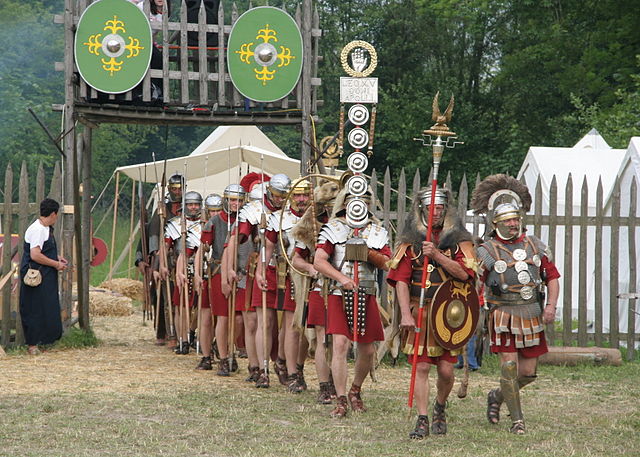In the Roman Republic and the Roman Empire, the Latin word castrum was a military-related term.
Reconstructed gateway of a Castrum Stativum at Arbeia (South Shields), a supply depot for Hadrian's Wall. Note the battlements, the Roman arches, the turres.
Reconstruction of the specula or vigilarium (Germanic burgus), "watchtower", a type of castrum, at Rainau-Buch, Germany. An ancient watchtower would have been surrounded by wall and ditch.
The reconstructed porta praetoria of Castrum Pfünz, Germany, near the Rhaetian Limes.
Castrum at Masada. Note the classical "playing-card" layout.
The Roman legion, the largest military unit of the Roman army, was composed of Roman citizens serving as legionaries. During the Roman Republic the manipular legion comprised 4,200 infantry and 300 cavalry. After the Marian reforms in 107 BC the legions were formed of 5200 men and were restructured around 10 cohorts, the first cohort being double strength. This structure persisted throughout the Principate and Middle Empire, before further changes in the fourth century resulted in new formations of around 1000 men.
Depiction of Roman legionnaires
A historical reenactor in Roman centurion costume
Reenacters portraying Roman legionaries of Legio XV Apollinaris







